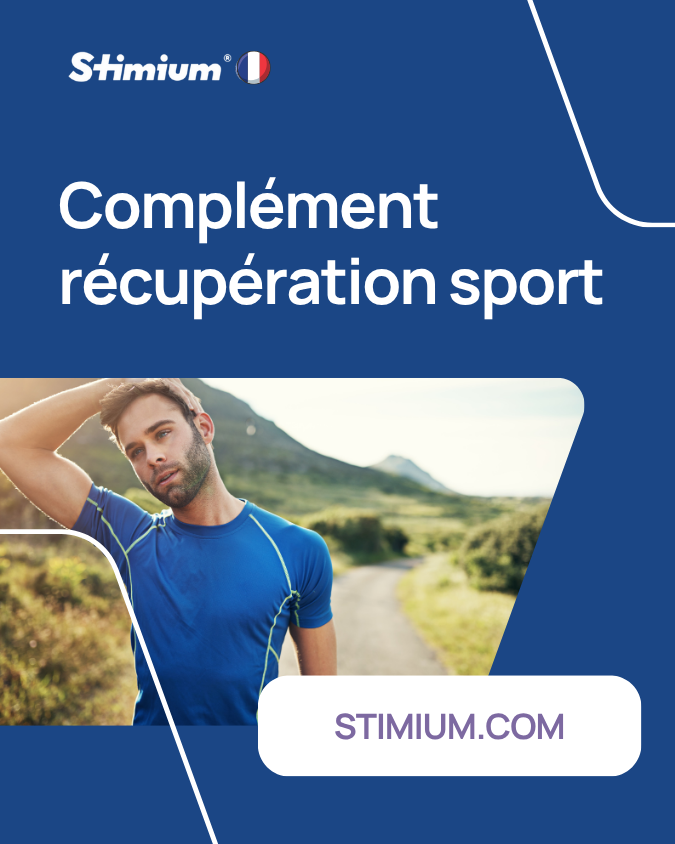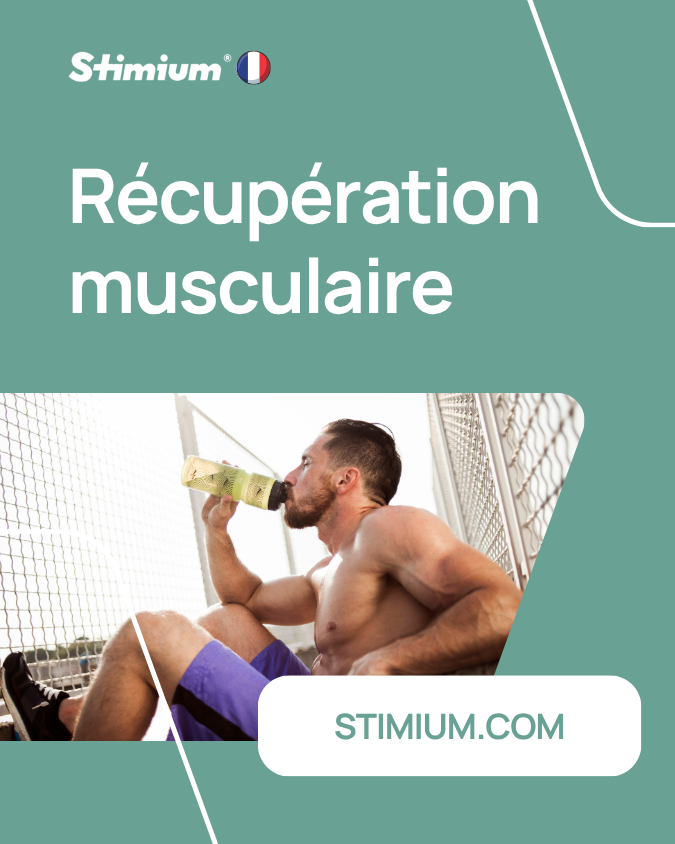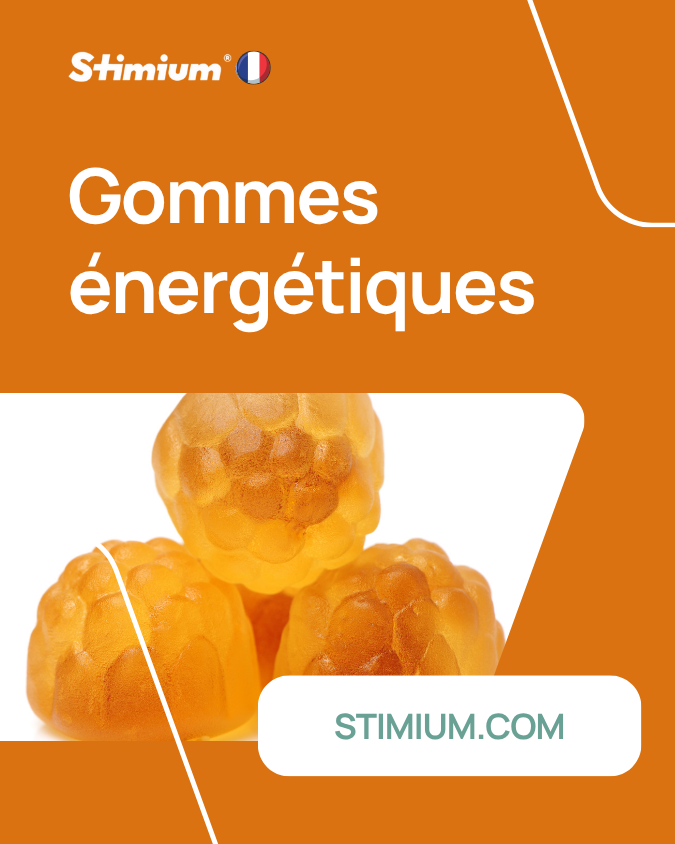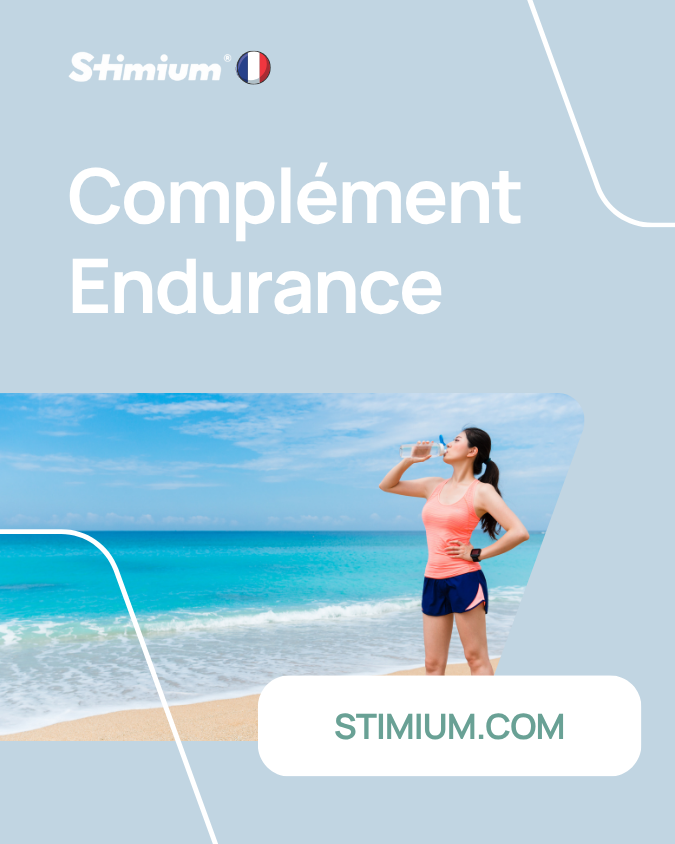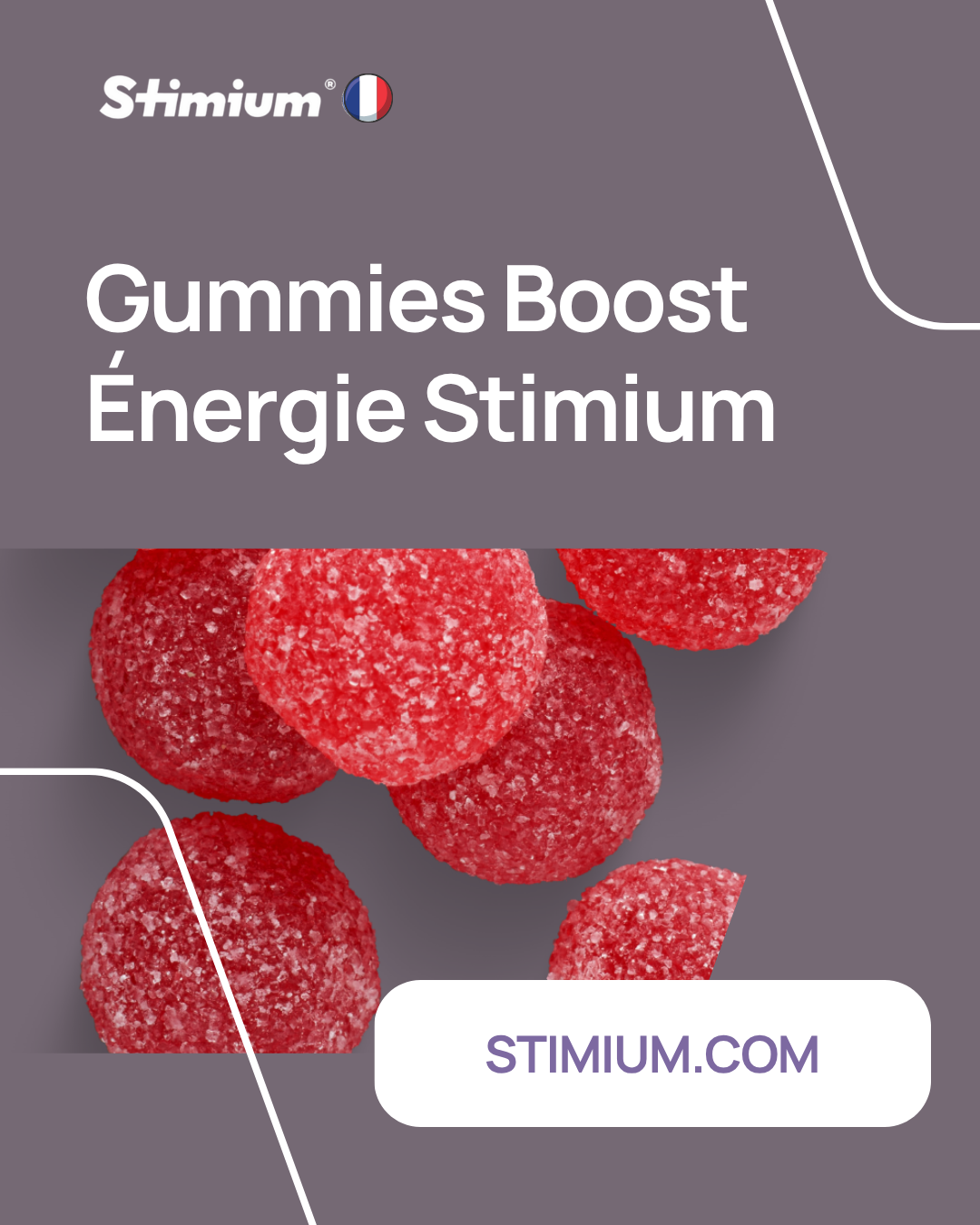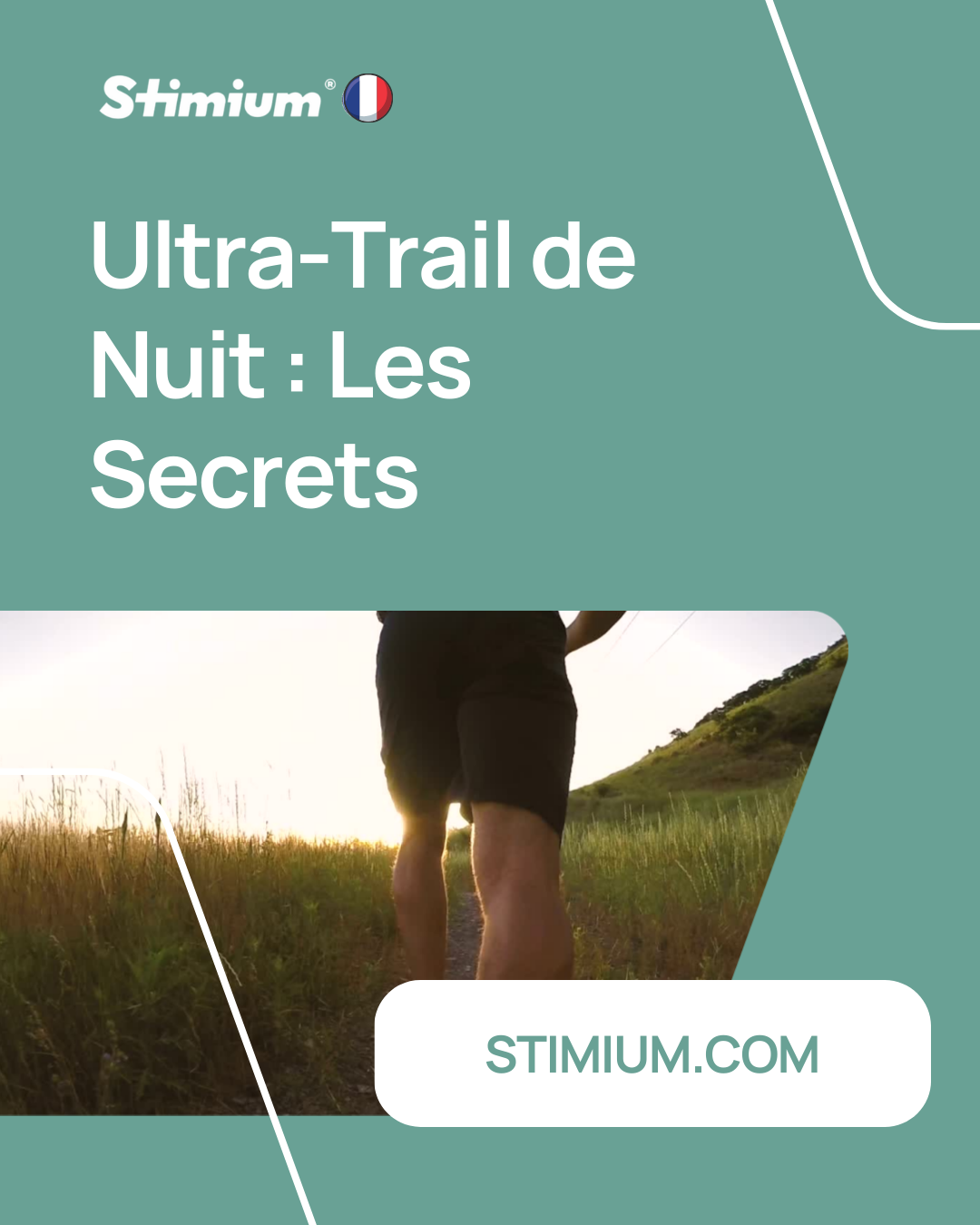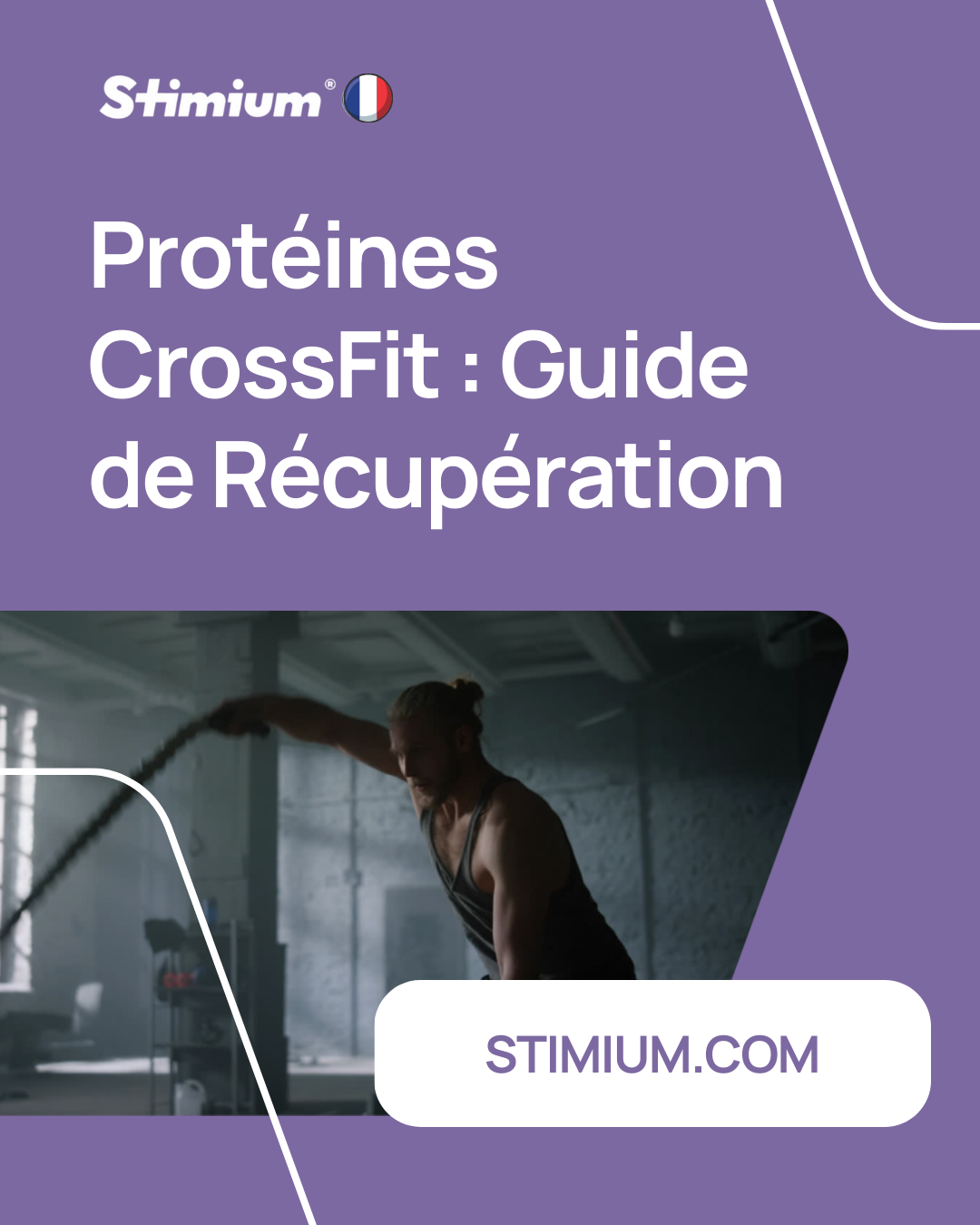L'Ashwagandha, la plante du 21eme siècle aux multiples propriétés
L’Ashwagandha est une plante originaire d’Inde. Elle est communément appelée le « ginseng indien » (nom scientifique « Withania somnifera ») et est utilisee en usage traditionnelle dans la medecine ayurvedique depuis des siecles. L’Ashwagandha contient un cocktail de composés peu communs : (1) des flavonoïdes, qui sont des antioxydants naturels très puissants, (2) des acides phénoliques, (3) des acides gras, (4) des alcaloïdes, (5) de la catéchine, (5) des lactones stéroïdales,(6) du kaempférol. C’est cette composition unique qui fait de l’Ashwagandha l’une des plantes les plus puissantes au monde !
Stimium Ashwagandha se positionne ainsi (1) comme un produit sante extrêmement bénéfique, mais aussi (2) comme une solution très intéressante pour les sportifs.
Avec une concentration de withanolides et sitoindosides, des enzymes antioxydantes très particulières, l’Ashwagandha (la racine de la plante souvent presentee sous forme de poudre) permet de réduire les effets du stress oxydatif sur notre cerveau, tout en améliorant les capacités cognitives. L’Ashwagandha est une plante « adaptogène », tout comme le rhodiola rosea que l’on retrouve dans Stimium Pro Nrj caps , le ginseng asiatique que l’on retrouve dans Stimium KG, le Bacopa, ou encore le Gingko Biloba.
Par ailleurs, en agissant sur le stress, sur le systeme nerveux central et sur notre bien-être, Stimium Ashwagandha participe aussi à l’amélioration de notre sommeil et de notre repos. Il est tout à fait possible de consommer de l’ashwagandha pour lutter contre les troubles du sommeil, et notamment contre l’insomnie. À la faveur de sa teneur en somniférine et en L-tryptophane, l’ashwagandha pourra agir sur votre sommeil. Mieux, il favorisera l'endormissement et vous évitera les réveils nocturnes intempestifs.
L’Ashwagandha est également une plante anti-inflammatoire et antioxydante. En effet, Stimium Ashwagandha aide à prévenir et à lutter contre les maladies articulaires, à l’image des rhumatismes ou de l’arthrite.
Mais ce n’est pas tout ! Stimium Ashwagandha est aussi connu pour ses propriétés antioxydantes hors du commun. En améliorant l’élimination des radicaux libres dans l’organisme, il permet de contrer le vieillissement cellulaire. Ce produit ayurvédique intervient par ailleurs dans le maintien d'une activité cognitive optimale à cause de sa capacité à maintenir les neurones actifs plus longtemps.
Pour la pratique sportive, en considérant que l’Ashwagandha n’est évidemment pas inscrit sur les listes de l’AMA en tant que produit dopant, (il est donc autorisé bien entendu), il est tout à fait intéressant de prendre une supplémentation comprenant cette plante. Effectivement, Stimium Ashwagandha, comme la plupart des plantes adaptogènes aident l’organisme à s’adapter à toutes les situations de stress, c'est donc notamment un excellent remede pour lutter contre l'anxiété. En cela, l’Ashwagandha contribue à améliorer les performances sportives et l’endurance. Mais pas seulement, car cette plante améliore la fonction musculaire et optimiser la récupération après un effort physique intense, un effet complet pour le corps.
L’Ashwagandha permet également d’améliorer la performance sportive des athlètes qui mobilisent à la fois leur explosivité et leur force, donc notamment sur des activités type fitness ou musculation ou encore des sports d’explosivité, comme le sprint (athlétisme, natation), les sports de combat, le rugby, le handball, le basket, le hockey… Il a également été démontré que la supplémentation à base d’Ashwagandha augmente la production de testostérone chez les personnes qui suivent des programmes d’entraînement de force. Plusieurs études ont démontré que cette plante améliore la force et contribue à augmenter la masse musculaire des personnes qui pratiquent du renforcement musculaire, à améliorer l’équilibre, la puissance, la vélocité maximale, et la consommation maximale d’oxygène des sportifs.
Une récente Meta Analyses suggère que la supplémentation en Ashwagandha améliore les variables liées (1) à la force/puissance, (2) à la forme cardiorespiratoire et (3) à la fatigue/récupération chez les hommes et les femmes en bonne santé pratiquant une activité phyisque (https://www.mdpi.com/2411-5142/6/1/20/htm).
Stimium Ashwagandha, complement alimentaire, est également efficace sur des sports d’endurance, notamment sur la capacité maximale de consommation d’oxygène avec un impact sur la VO2MAX, sur la réduction des effets de fatigue et sur l’endurance cardiovasculaire (la capacité de poursuivre pendant un certain temps un effort modéré sollicitant l'ensemble des muscles).
Attention cependant, si l’Ashwagandha dispose de multiples propriétés, dues comme nous l’avons vu, a une composition assez exceptionnelle, cela signifie en parallèle qu’il convient de maitriser l’ensemble de ses effets. Par exemple, cette plante peut provoquer des troubles intestinaux divers (diarrhée voir l’inverse constipation) a très hautes doses. C’est pour cela que Stimium Ashwagandha est dose a 300mg et qu’il est recommandé une capsule par jour. Nous ne recommandons pas plus de 3 capsules par jour, car a partir de 900mg par jour, ce type d’effets secondaires pourrait se produire, enlevant alors tous les bénéfices d’une prise régulière. Toujours à forte dose, l’ashwagandha peut générer un effet hypnotique. La présence d’alcaloïdes dans la composition de l’ashwagandha en fait une plante déconseillée aux femmes enceintes et allaitantes. Par ailleurs, on déconseille souvent l’ashwagandha aux personnes atteintes de troubles intestinaux, d’hyperthyroïdie ou encore, d’hémochromatose. Enfin, les personnes qui suivent un traitement à base d’antidépresseurs doivent également demander l’avis de leur médecin avant de débuter une cure d’ashwagandha ou de toute autre plante.
Nous n’avons pas développé ce produit avec la R&D Stimium par hasard. Nous croyons au pouvoir des plantes, surtout après une analyse pointue de la bibliographie qui démontre les bienfaits de cette plante en medecine, autant pour le sportif, que pour le non sportif. Nous espérons que comme nous, vous serez convaincu par les bienfaits de l’Ashwagandha, dans le cadre d’une activité physique, ou dans votre vie de tous les jours, toujours plus stressante. Nous sommes certains chez Stimium qu’il s’agira de la plante de ces prochaines années, car on peut voir de plus en plus de publications portant sur ses effets bénéfiques. On espère vous avoir convaincu !
References bibliographiques:
- Keßler, C.; Gupta, H. Rasayanas: Ayurvedische Behandlung von altersbedingten Erkrankungen. Komplementärmedizin2015, 7, 22–25. [Google Scholar] [CrossRef]
- Mishra, L.C.; Singh, B.B.; Dagenais, S. Scientific basis for the therapeutic use of Withania somnifera (ashwagandha): A review. Med. Rev.2000, 5, 334–346. [Google Scholar] [PubMed]
- Brekhman, I.I.; Dardymov, I.V. New Substances of Plant Origin which Increase Nonspecific Resistance. Rev. Pharmacol.1969, 9, 419–430. [Google Scholar] [CrossRef]
- Singh, N.; Bhalla, M.; De Jager, P.; Gilca, M. An Overview on Ashwagandha: A Rasayana (Rejuvenator) of Ayurveda. J. Tradit. Complement. Altern. Med.2011, 8. [Google Scholar] [CrossRef] [PubMed]
- Mirjalili, M.H.; Moyano, E.; Bonfill, M.; Cusido, R.M.; Palazon, J. Steroidal lactones from Withania somnifera, an ancient plant for novel medicine. Molecules2009, 14, 2373–2393. [Google Scholar] [CrossRef]
- Tripathi, S.; Sangwan, R.S.; Mishra, B.; Jadaun, J.S.; Sangwan, N.S. Berry transcriptome: Insights into a novel resource to understand development dependent secondary metabolism in Withania somnifera (Ashwagandha). Plant.2019, 168, 148–173. [Google Scholar] [CrossRef] [PubMed]
- Nile, S.H.; Nile, A.; Gansukh, E.; Baskar, V.; Kai, G. Subcritical water extraction of withanosides and withanolides from ashwagandha (Withania somniferaL) and their biological activities. Food Chem. Toxicol. 2019, 132, 110659. [Google Scholar] [CrossRef] [PubMed]
- Trivedi, M.K.; Panda, P.; Sethi, K.K.; Jana, S. Metabolite Profiling in Withania somnifera Roots Hydroalcoholic Extract Using LC/MS, GC/MS and NMR Spectroscopy. Biodivers.2017, 14, e1600280. [Google Scholar] [CrossRef] [PubMed]
- Jayaprakasam, B.; Zhang, Y.; Seeram, N.P.; Nair, M.G. Growth inhibition of human tumor cell lines by withanolides from Withania somnifera leaves. Life Sci.2003, 74, 125–132. [Google Scholar] [CrossRef] [PubMed]
- Kaileh, M.; Vanden Berghe, W.; Heyerick, A.; Horion, J.; Piette, J.; Libert, C.; De Keukeleire, D.; Essawi, T.; Haegeman, G. Withaferin a strongly elicits IkappaB kinase beta hyperphosphorylation concomitant with potent inhibition of its kinase activity. Biol. Chem.2007, 282, 4253–4264. [Google Scholar] [CrossRef]
- Kuboyama, T.; Tohda, C.; Komatsu, K. Neuritic regeneration and synaptic reconstruction induced by withanolide A. J. Pharmacol.2005, 144, 961–971. [Google Scholar] [CrossRef]
- Pratte, M.A.; Nanavati, K.B.; Young, V.; Morley, C.P. An Alternative Treatment for Anxiety: A Systematic Review of Human Trial Results Reported for the Ayurvedic Herb Ashwagandha (Withania somnifera). Altern. Complement. Med.2014, 20, 901–908. [Google Scholar] [CrossRef] [PubMed]
- Durg, S.; Shivaram, S.B.; Bavage, S. Withania somnifera (Indian ginseng) in male infertility: An evidence-based systematic review and meta-analysis. Phytomedicine2018, 50, 247–256. [Google Scholar] [CrossRef] [PubMed]
- Nasimi Doost Azgomi, R.; Zomorrodi, A.; Nazemyieh, H.; Fazljou, S.M.B.; Sadeghi Bazargani, H.; Nejatbakhsh, F.; Moini Jazani, A.; Ahmadi AsrBadr, Y. Effects of Withania somnifera on Reproductive System: A Systematic Review of the Available Evidence. Res. Int.2018, 2018, 1–17. [Google Scholar] [CrossRef] [PubMed]
- Durg, S.; Bavage, S.; Shivaram, S.B. Withania somnifera (Indian ginseng) in diabetes mellitus: A systematic review and meta-analysis of scientific evidence from experimental research to clinical application. Res.2020, 34, 1041–1059. [Google Scholar] [CrossRef]
- Ng, Q.X.; Loke, W.; Foo, N.X.; Tan, W.J.; Chan, H.W.; Lim, D.Y.; Yeo, W.S. A systematic review of the clinical use of Withania somnifera (Ashwagandha) to ameliorate cognitive dysfunction. Res.2019, 34, 583–590. [Google Scholar] [CrossRef] [PubMed]
- Durg, S.; Dhadde, S.B.; Vandal, R.; Shivakumar, B.S.; Charan, C.S. Withania somnifera(Ashwagandha) in neurobehavioural disorders induced by brain oxidative stress in rodents: A systematic review and meta-analysis. Pharm. Pharmacol.2015, 67, 879–899. [Google Scholar] [CrossRef]
- Pérez-Gómez, J.; Villafaina, S.; Adsuar, J.C.; Merellano-Navarro, E.; Collado-Mateo, D. Effects of Ashwagandha (Withania somnifera) on VO2max: A Systematic Review and Meta-Analysis. Nutrients2020, 12, 1119. [Google Scholar] [CrossRef]
- Wankhede, S.; Langade, D.; Joshi, K.; Sinha, S.R.; Bhattacharyya, S. Examining the effect of Withania somnifera supplementation on muscle strength and recovery: A randomized controlled trial. Int. Soc. Sports Nutr.2015, 12, 43. [Google Scholar] [CrossRef]
- Ziegenfuss, T.; Kedia, A.; Sandrock, J.; Raub, B.; Kerksick, C.; Lopez, H. Effects of an Aqueous Extract of Withania somnifera on Strength Training Adaptations and Recovery: The STAR Trial. Nutrients2018, 10, 1807. [Google Scholar] [CrossRef]
- Estarli, M.; Aguilar Barrera, E.S.; Martínez-Rodríguez, R.; Baladia, E.; Duran Agüero, S.; Camacho, S.; Buhring, K.; Herrero-López, A.; Gil-González, D.M. Ítems de referencia para publicar Protocolos de Revisiones Sistemáticas y Metaanálisis: Declaración PRISMA-P 2015. Esp. Nutr. Hum. Diet.2016, 20, 148–160. [Google Scholar] [CrossRef]
- Sterne, J.A.C.; Savović, J.; Page, M.J.; Elbers, R.G.; Blencowe, N.S.; Boutron, I.; Cates, C.J.; Cheng, H.-Y.; Corbett, M.S.; Eldridge, S.M.; et al. RoB 2: A revised tool for assessing risk of bias in randomised trials. BMJ2019, 366. [Google Scholar] [CrossRef] [PubMed]
- McGuinness, L.A.; Higgins, J.P.T. Risk-of-bias VISualization (robvis): An R package and Shiny web app for visualizing risk-of-bias assessments. Synth. Methods2021, 12, 55–61. [Google Scholar] [CrossRef]
- Higgins, J.P.; Thomas, J.; Chandler, J.; Cumpston, M.; Li, T.; Page, M.J.; Welch, V.A. Cochrane Handbook for Systematic Reviews of Interventions, 2nd ed.; John Wiley & Sons: Oxford, UK, 2019. [Google Scholar] [CrossRef]
- Furukawa, T.A.; Barbui, C.; Cipriani, A.; Brambilla, P.; Watanabe, N. Imputing missing standard deviations in meta-analyses can provide accurate results. Clin. Epidemiol.2006, 59, 7–10. [Google Scholar] [CrossRef]
- Goulet-Pelletier, J.-C.; Cousineau, D. A review of effect sizes and their confidence intervals, Part I: The Cohen’s d family. Methods Psychol.2018, 14, 242–265. [Google Scholar] [CrossRef]
- Borenstein, M.; Hedges, L.V.; Higgins, J.P.; Rothstein, H.R. Introduction to Meta-Analysis; John Wiley & Sons: Chichester, West Sussex, UK, 2011. [Google Scholar]
- Cumming, G. Understanding the New Statistics: Effect Sizes, Confidence Intervals, and Meta-Analysis; Routledge: New York, NY, USA, 2012. [Google Scholar] [CrossRef]
- Bürkner, P.-C. Advanced Bayesian Multilevel Modeling with the R Package brms. R J.2018, 10, 395. [Google Scholar] [CrossRef]
- R Core Team. R: A Language and Environment for Statistical Computing [Computer Software]. Available online: https://www.R-project.org/(accessed on 20 November 2020).
- Sandhu, J.; Shah, B.; Shenoy, S.; Padhi, M.M.; Chauhan, S.; Lavekar, G.S. Effects of Withania somnifera (Ashwagandha) and Terminalia arjuna (Arjuna) on physical performance and cardiorespiratory endurance in healthy young adults. J. Ayurveda Res.2010, 1, 144. [Google Scholar] [CrossRef] [PubMed]
- Raut, A.; Rege, N.; Shirolkar, S.; Pandey, S.; Tadvi, F.; Solanki, P.; Vaidya, R.; Vaidya, A.; Kene, K. Exploratory study to evaluate tolerability, safety, and activity of Ashwagandha (Withania somnifera) in healthy volunteers. Ayurveda Integr. Med.2012, 3, 111. [Google Scholar] [CrossRef] [PubMed]
- Shenoy, S.; Chaskar, U.; Sandhu, J.; Paadhi, M. Effects of eight-week supplementation of Ashwagandha on cardiorespiratory endurance in elite Indian cyclists. Ayurveda Integr. Med.2012, 3, 209. [Google Scholar] [CrossRef]
- Malik, A.; Mehta, V.; Dahiya, V. Effect of Ashwagandha (Withania somnifera) root powder supplementation on the VO2 and hemoglobin in hockey players. Int. J. Behav. Soc. Mov. Sci.2013, 2, 91–99. [Google Scholar]
- Kuchewar, V.; Borkar, M.; Nisargandha, M. Evaluation of antioxidant potential of Rasayana drugs in healthy human volunteers. AYU (Int. Q. J. Res. Ayurveda)2014, 35, 46. [Google Scholar] [CrossRef]
- Pingali, U.; Pilli, R.; Fatima, N. Effect of standardized aqueous extract of Withania somniferaon tests of cognitive and psychomotor performance in healthy human participants. Res.2014, 6, 12. [Google Scholar] [CrossRef]
- Choudhary, B.; Shetty, A.; Langade, D.G. Efficacy of Ashwagandha (Withania somnifera[L.] Dunal) in improving cardiorespiratory endurance in healthy athletic adults. AYU (Int. Q. J. Res. Ayurveda) 2015, 36, 63. [Google Scholar] [CrossRef]
- Tripathi, R.K.; Salve, B.A.; Petare, A.U.; Raut, A.A.; Rege, N.N. Effect of Withania somnifera on physical and cardiovascular performance induced by physical stress in healthy human volunteers. J. Basic Clin. Pharmacol.2016. [Google Scholar] [CrossRef]
- Salve, J.; Pate, S.; Debnath, K.; Langade, D. Adaptogenic and Anxiolytic Effects of Ashwagandha Root Extract in Healthy Adults: A Double-blind, Randomized, Placebo-controlled Clinical Study. Cureus2019, 11. [Google Scholar] [CrossRef]
- Lopresti, A.L.; Smith, S.J.; Malvi, H.; Kodgule, R. An investigation into the stress-relieving and pharmacological actions of an ashwagandha (Withania somnifera) extract. Medicine2019, 98, e17186. [Google Scholar] [CrossRef] [PubMed]
- Deshpande, A.; Irani, N.; Balkrishnan, R.; Benny, I.R. A randomized, double blind, placebo controlled study to evaluate the effects of ashwagandha (Withania somnifera) extract on sleep quality in healthy adults. Sleep Med.2020, 72, 28–36. [Google Scholar] [CrossRef] [PubMed]
- Kruschke, J.K.; Liddell, T.M. The Bayesian New Statistics: Hypothesis testing, estimation, meta-analysis, and power analysis from a Bayesian perspective. Bull. Rev.2017, 25, 178–206. [Google Scholar] [CrossRef]
- Powers, S.K.; Jackson, M.J. Exercise-induced oxidative stress: Cellular mechanisms and impact on muscle force production. Rev.2008, 88, 1243–1276. [Google Scholar] [CrossRef] [PubMed]
- Ferreira, L.F.; Reid, M.B. Muscle-derived ROS and thiol regulation in muscle fatigue. Appl Physiol.2008, 104, 853–860. [Google Scholar] [CrossRef] [PubMed]
- Bonilla, D.A.; Pérez-Idárraga, A.; Odriozola-Martínez, A.; Kreider, R.B. The 4R’s Framework of Nutritional Strategies for Post-Exercise Recovery: A Review with Emphasis on New Generation of Carbohydrates. J. Environ. Res. Public Health2020, 18, 103. [Google Scholar] [CrossRef] [PubMed]
- McKenna, M.J.; Medved, I.; Goodman, C.A.; Brown, M.J.; Bjorksten, A.R.; Murphy, K.T.; Petersen, A.C.; Sostaric, S.; Gong, X. N-acetylcysteine attenuates the decline in muscle Na+,K+-pump activity and delays fatigue during prolonged exercise in humans. Physiol2006, 576, 279–288. [Google Scholar] [CrossRef] [PubMed]
- Medved, I.; Brown, M.J.; Bjorksten, A.R.; McKenna, M.J. Effects of intravenous N-acetylcysteine infusion on time to fatigue and potassium regulation during prolonged cycling exercise. Appl Physiol.2004, 96, 211–217. [Google Scholar] [CrossRef] [PubMed]
- Medved, I.; Brown, M.J.; Bjorksten, A.R.; Murphy, K.T.; Petersen, A.C.; Sostaric, S.; Gong, X.; McKenna, M.J. N-acetylcysteine enhances muscle cysteine and glutathione availability and attenuates fatigue during prolonged exercise in endurance-trained individuals. Appl Physiol.2004, 97, 1477–1485. [Google Scholar] [CrossRef]
- Shanks, N.; Greek, R.; Greek, J. Are animal models predictive for humans? Ethicsand Humanit. Med.2009, 4. [Google Scholar] [CrossRef]
- Palliyaguru, D.L.; Chartoumpekis, D.V.; Wakabayashi, N.; Skoko, J.J.; Yagishita, Y.; Singh, S.V.; Kensler, T.W. Withaferin A induces Nrf2-dependent protection against liver injury: Role of Keap1-independent mechanisms. Free Radic. Biol. Med.2016, 101, 116–128. [Google Scholar] [CrossRef]
- Yan, Z.; Guo, R.; Gan, L.; Lau, W.B.; Cao, X.; Zhao, J.; Ma, X.; Christopher, T.A.; Lopez, B.L.; Wang, Y. Withaferin A inhibits apoptosis via activated Akt-mediated inhibition of oxidative stress. Life Sci.2018, 211, 91–101. [Google Scholar] [CrossRef]
- Reuland, D.J.; Khademi, S.; Castle, C.J.; Irwin, D.C.; McCord, J.M.; Miller, B.F.; Hamilton, K.L. Upregulation of phase II enzymes through phytochemical activation of Nrf2 protects cardiomyocytes against oxidant stress. Free Radic. Biol. Med.2013, 56, 102–111. [Google Scholar] [CrossRef]
- Hybertson, B.M.; Gao, B.; Bose, S.; McCord, J.M. Phytochemical Combination PB125 Activates the Nrf2 Pathway and Induces Cellular Protection against Oxidative Injury. Antioxidants2019, 8, 119. [Google Scholar] [CrossRef]
- Velmurugan, K.; Alam, J.; McCord, J.M.; Pugazhenthi, S. Synergistic induction of heme oxygenase-1 by the components of the antioxidant supplement Protandim. Free Radic. Biol. Med.2009, 46, 430–440. [Google Scholar] [CrossRef]
- Bakkar, N.; Guttridge, D.C. NF-kappaB signaling: A tale of two pathways in skeletal myogenesis. Rev.2010, 90, 495–511. [Google Scholar] [CrossRef]
- Ichikawa, H.; Takada, Y.; Shishodia, S.; Jayaprakasam, B.; Nair, M.G.; Aggarwal, B.B. Withanolides potentiate apoptosis, inhibit invasion, and abolish osteoclastogenesis through suppression of nuclear factor-kappaB (NF-kappaB) activation and NF-kappaB-regulated gene expression. Cancer2006, 5, 1434–1445. [Google Scholar] [CrossRef]
- Bargagna-Mohan, P.; Ravindranath, P.P.; Mohan, R. Small molecule anti-angiogenic probes of the ubiquitin proteasome pathway: Potential application to choroidal neovascularization. Ophthalmol. Vis. Sci.2006, 47, 4138–4145. [Google Scholar] [CrossRef]
- Schumacher, Y.O.; Jankovits, R.; Bultermann, D.; Schmid, A.; Berg, A. Hematological indices in elite cyclists. J. Med. Sci. Sports2002, 12, 301–308. [Google Scholar] [CrossRef]
- Borges, G.F.; Rama, L.M.; Pedreiro, S.; Rosado, F.; Alves, F.; Santos, A.M.; Paiva, A.; Teixeira, A.M. Haematological changes in elite kayakers during a training season. Physiol. Nutr. Metab.2012, 37, 1140–1146. [Google Scholar] [CrossRef]
- Rietjens, G.J.; Kuipers, H.; Hartgens, F.; Keizer, H.A. Red blood cell profile of elite olympic distance triathletes. A three-year follow-up. J. Sports Med.2002, 23, 391–396. [Google Scholar] [CrossRef] [PubMed]
- Saunders, P.U.; Garvican-Lewis, L.A.; Schmidt, W.F.; Gore, C.J. Relationship between changes in haemoglobin mass and maximal oxygen uptake after hypoxic exposure. J. Sports Med.2013, 47, i26–i30. [Google Scholar] [CrossRef] [PubMed]
- Otto, J.M.; Montgomery, H.E.; Richards, T. Haemoglobin concentration and mass as determinants of exercise performance and of surgical outcome. Physiol. Med.2013, 2. [Google Scholar] [CrossRef] [PubMed]
- Calbet, J.A.L.; Lundby, C.; Koskolou, M.; Boushel, R. Importance of hemoglobin concentration to exercise: Acute manipulations. Physiol. Neurobiol.2006, 151, 132–140. [Google Scholar] [CrossRef]
- Mountjoy, M.; Sundgot-Borgen, J.K.; Burke, L.M.; Ackerman, K.E.; Blauwet, C.; Constantini, N.; Lebrun, C.; Lundy, B.; Melin, A.K.; Meyer, N.L.; et al. IOC consensus statement on relative energy deficiency in sport (RED-S): 2018 update. J. Sports Med.2018, 52, 687–697. [Google Scholar] [CrossRef]
- Lopresti, A.L.; Drummond, P.D.; Smith, S.J. A Randomized, Double-Blind, Placebo-Controlled, Crossover Study Examining the Hormonal and Vitality Effects of Ashwagandha (Withania somnifera) in Aging, Overweight Males. J. Men’s Health2019, 13, 155798831983598. [Google Scholar] [CrossRef]
- Gabrielsen, J.S. Iron and Testosterone: Interplay and Clinical Implications. Sex. Health Rep.2017, 9, 5–11. [Google Scholar] [CrossRef]
- Langade, D.; Kanchi, S.; Salve, J.; Debnath, K.; Ambegaokar, D. Efficacy and Safety of Ashwagandha (Withania somnifera) Root Extract in Insomnia and Anxiety: A Double-blind, Randomized, Placebo-controlled Study. Cureus2019, 11. [Google Scholar] [CrossRef]
- Ramakanth, G.S.H.; Uday-Kumar, C.; Kishan, P.V.; Usharani, P. A randomized, double blind placebo controlled study of efficacy and tolerability of Withaina somnifera extracts in knee joint pain. Ayurveda Integr. Med.2016, 7, 151–157. [Google Scholar] [CrossRef] [PubMed]
- Sterling, P. Allostasis: A model of predictive regulation. Behav.2012, 106, 5–15. [Google Scholar] [CrossRef] [PubMed]
- Sangwan, R.S.; Chaurasiya, N.D.; Misra, L.N.; Lal, P.; Uniyal, G.C.; Sharma, R.; Sangwan, N.S.; Suri, K.A.; Qazi, G.N.; Tuli, R. Phytochemical variability in commercial herbal products and preparations of Withania somnifera (Ashwagandha). Sci.2004, 86, 461–465. [Google Scholar]
- Tomar, V.; Beuerle, T.; Sircar, D. A validated HPTLC method for the simultaneous quantifications of three phenolic acids and three withanolides from Withania somnifera plants and its herbal products. Chromatogr. B2019, 1124, 154–160. [Google Scholar] [CrossRef]
- Choudhary, D.; Bhattacharyya, S.; Joshi, K. Body Weight Management in Adults Under Chronic Stress Through Treatment With Ashwagandha Root Extract. Evid. Based Complement. Altern. Med.2016, 22, 96–106. [Google Scholar] [CrossRef]
- Choudhary, D.; Bhattacharyya, S.; Bose, S. Efficacy and Safety of Ashwagandha (Withania somnifera(L.) Dunal) Root Extract in Improving Memory and Cognitive Functions. Diet. Suppl. 2017, 14, 599–612. [Google Scholar] [CrossRef]
- Kelgane, S.B.; Salve, J.; Sampara, P.; Debnath, K. Efficacy and Tolerability of Ashwagandha Root Extract in the Elderly for Improvement of General Well-being and Sleep: A Prospective, Randomized, Double-blind, Placebo-controlled Study. Cureus2020, 12. [Google Scholar] [CrossRef] [PubMed]

